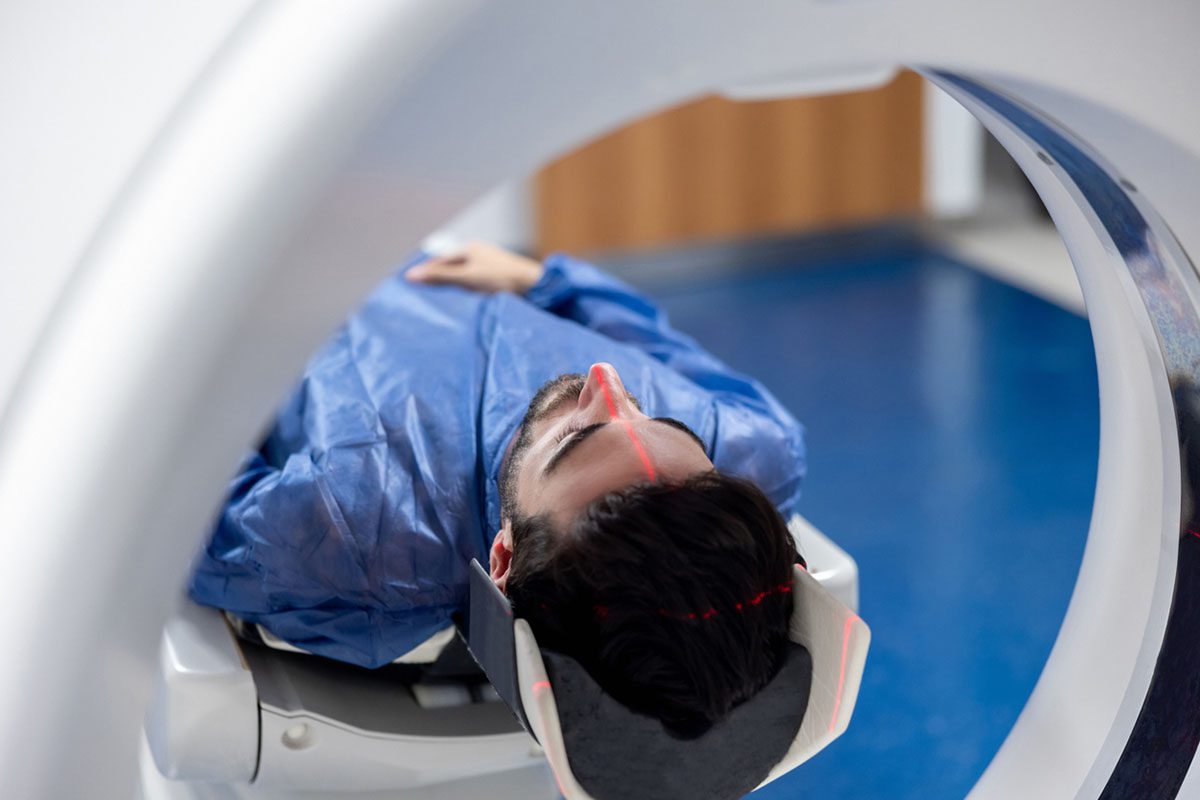Because this piece does not have an abstract, we have provided for your benefit the first 3 sentences of the full text.
Misophonia is an impairing syndrome with typical onset during childhood and is characterized by extreme sound sensitivities to selective auditory stimuli that elicit avoidance, anxiety, irritability, and/or outbursts. To date, there exists only 1 case report of cognitive-behavioral therapy (CBT) and no published information on pharmacologic intervention for misophonia. Although Bernstein et al demonstrated that misophonia-related symptoms could be managed with CBT when triggers are encountered, they did not objectively measure misophonia symptom improvement. We present the treatment of 2 youth who met the proposed criteria for misophonia using objective rating scales and highlight CBT components used to address their symptoms.
This work may not be copied, distributed, displayed, published, reproduced, transmitted, modified, posted, sold, licensed, or used for commercial purposes. By downloading this file, you are agreeing to the publisher’s Terms & Conditions.


Misophonia is an impairing syndrome with typical onset during childhood and is characterized by extreme sound sensitivities to selective auditory stimuli that elicit avoidance, anxiety, irritability, and/or outbursts.1-5 To date, there exists only 1 case report of cognitive-behavioral therapy (CBT)6 and no published information on pharmacologic intervention for misophonia. Although Bernstein et al6 demonstrated that misophonia-related symptoms could be managed with CBT when triggers are encountered, they did not objectively measure misophonia symptom improvement. We present the treatment of 2 youth who met the proposed criteria for misophonia1 using objective rating scales and highlight CBT components used to address their symptoms.
Case 1. Ariel (pseudonym) was a 17-year-old Caucasian girl with no psychiatric comorbidity whose misophonia symptoms included irritability, anxiety, and avoidance in response to sniffing, heavy breathing, chewing, and tapping. Ariel experienced greater irritability/anger and distress when family and friends produced sound triggers relative to strangers, which led to a high level of symptom accommodation and her eventual school withdrawal. Although Ariel’s stable medication regimen of venlafaxine (150 mg/d) and lisdexamfetamine (70 mg/d) was associated with slight improvement, she still experienced considerable impairment. Prior to treatment, Ariel completed the Misophonia Questionnaire and the Misophonia Severity Scale (Table 1).2
Case 2. Lilly (pseudonym) was an 11-year-old Hispanic girl with misophonia symptoms and no psychiatric comorbidity. Lilly’s misophonia symptoms had become pronounced within the past year, caused her distress, and impaired family functioning. Lilly’s triggers included sounds related to eating (slurping, lip smacking, chewing), breathing (heavy breathing, sniffing), tapping, and conversations in Spanish. Lilly vocalized distress/irritability and exhibited outbursts when triggers were produced by family members, but internalized distress/irritability with peers and teachers. Lilly’s disruptive outbursts caused family members to eat in a separate room and minimize parental conversation around her. Lilly and her mother also completed the Misophonia Questionnaire2 and the Misophonia Severity Scale2 (Table 1).
Treatment. The initial treatment session entailed psychoeducation about misophonia and oriented patients to CBT. It was emphasized that the goal of treatment was to allow patients to tolerate sound triggers without engaging in aggressive or avoidant behavior (versus making the sounds pleasant). At the second session, a trigger hierarchy was developed, followed by gradual, repetitive, and prolonged exposures with response prevention at subsequent sessions. Through repeated exposures, the youths habituated to the distress associated with the sound triggers and learned that avoidant, aggressive, and/or distracting behaviors were not necessary to reduce distress. For instance, a sniffing exposure might have begun by identifying a target range for the frequency and/or loudness based on the initial distress rating. Exposures would be titrated upward in frequency, intensity, and proximity based on habituation. Eventually, the sound trigger would switch from therapist to family members, and the process would recalibrate based on distress rating and titrate upward.
A reward hierarchy was implemented with Lilly to reinforce successful completion of exposures. Cognitive restructuring was utilized to help the youths identify and restructure dysfunctional beliefs related to sounds experienced during exposures and at home (eg, “My family makes these sounds to annoy/aggravate me” was restructured into “This is an opportunity to practice exposures”). As the youth progressed on their treatment hierarchy, family accommodation was reduced in a stepwise fashion. Relapse prevention strategies were addressed in the final sessions.
After treatment, Ariel experienced a large reduction in misophonia symptoms (Table 1). Although still experiencing some symptoms, Ariel stated that she possessed the tools to manage challenging environments and took steps to return to a public education setting. Lilly and her mother also reported a marked reduction in misophonia symptoms after treatment (Table 1). Lilly’s mother stated that Lilly’s symptoms no longer disrupted family functioning and family accommodation was almost nonexistent. While these findings are promising, further research is needed to replicate these results, increase the availability of CBT for misophonia, and clarify the association between misophonia and severe tinnitus.8
References
1. Schröder A, Vulink N, Denys D. Misophonia: diagnostic criteria for a new psychiatric disorder. PLoS ONE. 2013;8(1):e54706. PubMed doi:10.1371/journal.pone.0054706
2. Wu MS, Lewin AB, Murphy TK, et al. Misophonia: incidence, phenomenology, and clinical correlates in an undergraduate student sample. J Clin Psychol. 2014;70(10):994-1007. PubMed doi:10.1002/jclp.22098
3. Neal M, Cavanna AE. Selective sound sensitivity syndrome (misophonia) in a patient with Tourette syndrome. J Neuropsychiatry Clin Neurosci. 2013;25(1):E01. PubMed doi:10.1176/appi.neuropsych.11100235
4. Edelstein M, Brang D, Rouw R, et al. Misophonia: physiological investigations and case descriptions. Front Hum Neurosci. 2013;7:296. PubMed doi:10.3389/fnhum.2013.00296
5. Veale D. A compelling desire for deafness. J Deaf Stud Deaf Educ. 2006;11(3):369-372. PubMed doi:10.1093/deafed/enj043
6. Bernstein RE, Angell KL, Dehle CM. A brief course of cognitive behavioural therapy for the treatment of misophonia: a case example. The Cognitive Behavioural Therapist. 2013;6:e10.
7. Insel TR, Murphy DL, Cohen RM, et al. Obsessive-compulsive disorder: a double-blind trial of clomipramine and clorgyline. Arch Gen Psychiatry. 1983;40(6):605-612. PubMed doi:10.1001/archpsyc.1983.04390010015002</jrn>
8. M׸ller AR. Misophonia, phonophobia, and “exploding head” syndrome. In: M׸ller AR, Langguth B, DeRidder D, et al, eds. Textbook of Tinnitus. New York, NY: Springer; 2011. doi:10.1007/978-1-60761-145-5_4
Drug names: lisdexamfetamine (Vyvanse), venlafaxine (Effexor and others).
Corresponding author: Joseph F. McGuire, MA, Department of Psychology, University of South Florida, 4202 E Fowler Ave, PCD 4118G, Tampa, FL 33620 ([email protected]).
Author affiliations: Departments of Psychology and Pediatrics, University of South Florida, Tampa (all authors); Departments of Psychiatry and Behavioral Neurosciences, University of South Florida, Tampa (Dr Storch); Rogers Behavioral Health-Tampa Bay (Dr Storch); and All Children’s Hospital, Johns Hopkins Medicine, Baltimore, Maryland (Dr Storch).
Submitted: June 24, 2014; accepted September 3, 2014.
Potential conflicts of interest: Dr Storch has received grant funding in the last 2 years from the National Institutes of Health, Agency for Healthcare Research and Quality, International OCD Foundation, and Janssen Scientific Affairs; receives textbook honorarium from Springer publishers, American Psychological Association, and Lawrence Erlbaum; has been an educational consultant for Rogers Memorial Hospital; is a consultant for Prophase, Inc and CroNos, Inc; is on the speakers bureau and scientific advisory board for the International OCD Foundation; and receives research support from the All Children’s Hospital Guild Endowed Chair. Mr McGuire and Ms Wu report no relevant disclosures.
Funding/support: None reported.
J Clin Psychiatry 2015;76(5):573-574 (doi:10.4088/JCP.14cr09343).
© Copyright 2015 Physicians Postgraduate Press, Inc.
This PDF is free for all visitors!





